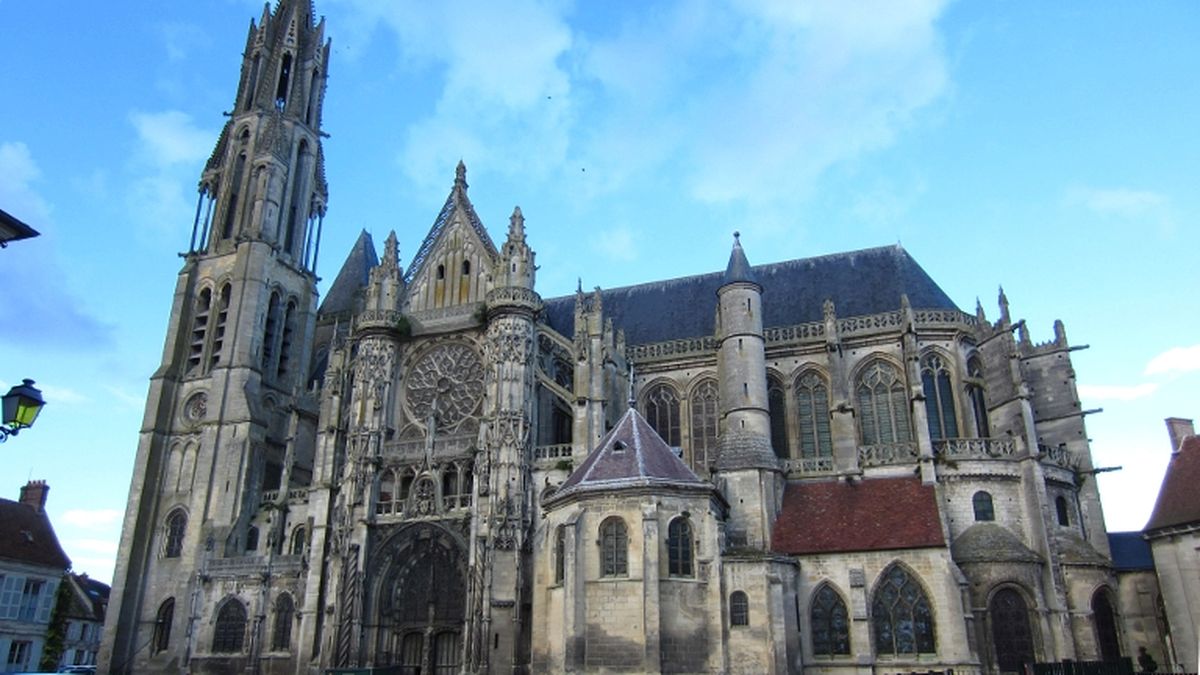 The cathedral | ©Anecdotrip.com / CC-BY-NC-SA
The cathedral | ©Anecdotrip.com / CC-BY-NC-SAThe cathedral
The smallest French Gothic cathedral!
In the beginning, the current cathedral was a simple oratory belonging to saint Rieul.
Then, several buildings succeeded one another. The current cathedral’s building site began in 1153.
But the thunder hit the church, who entirely burnt in 1504. So they re-raised it.
By the way, did you see this impressive right bell-tower, with its high spire (78 metres)?
It dates back to the 13th century: at that time, this kind of construction was a real technical exploit!
Except the spire, the cathedral houses treasures, inside: a chapel (next to the Southern entrance) with a nice vault and 16th century stained-glass windows, and a pretty Virgin Mary (14th c.).
Saint Rieul
Rieul was the first bishop of Senlis, in the 3th century.
First he was bishop of Arles: a legend says one day, during a Mass, he saw 3 gory doves coming in the church, with blood names written on their wings. Names of Eleuthère, Rustique and Denis…
3 martyrs who were tortured and executed in Paris!
It was a sign: Rieul had to go to Paris, to replace Denis in his bishopric! The saint left Arles and go to Paris. He stayed here 2 years. Then, he went to Senlis.
Did you know Rieul is often represented with cervid? After his death, stags and deers came in the cathedral, where he was buried. They stayed here for hours, then left without a noise...
A painting from 1645 made by Frédeau, in the cathedral, represents the ″tooth miracle″.
We can see king Clovis in Senlis, praying on Rieul’s grave. Bishop Liévain exhumed his body, and Clovis asked a relic.
They gave him… a tooth! What about that miracle? It happened when the blood flew, when they took it in the saint’s mouth!
Virgin of Victory
In a small chapel, we find Notre-Dame-de-la-Victoire (″Our-Lady-of-Victory″).
It was the name of a former abbey, not far from Senlis, founded in 1222 by king of France Philippe Augustus, in memory of battle of Bouvines (July 1214).
Philippe made a vow: he would raise a church dedicated to the Virgin Mary in case of victory.
Philippe won the battle: he raised a church but also an abbey, managed by monks of Saint-Victor of Paris.
The abbey became a place of pilgrimage: proof of that is that small Virgin statue...
